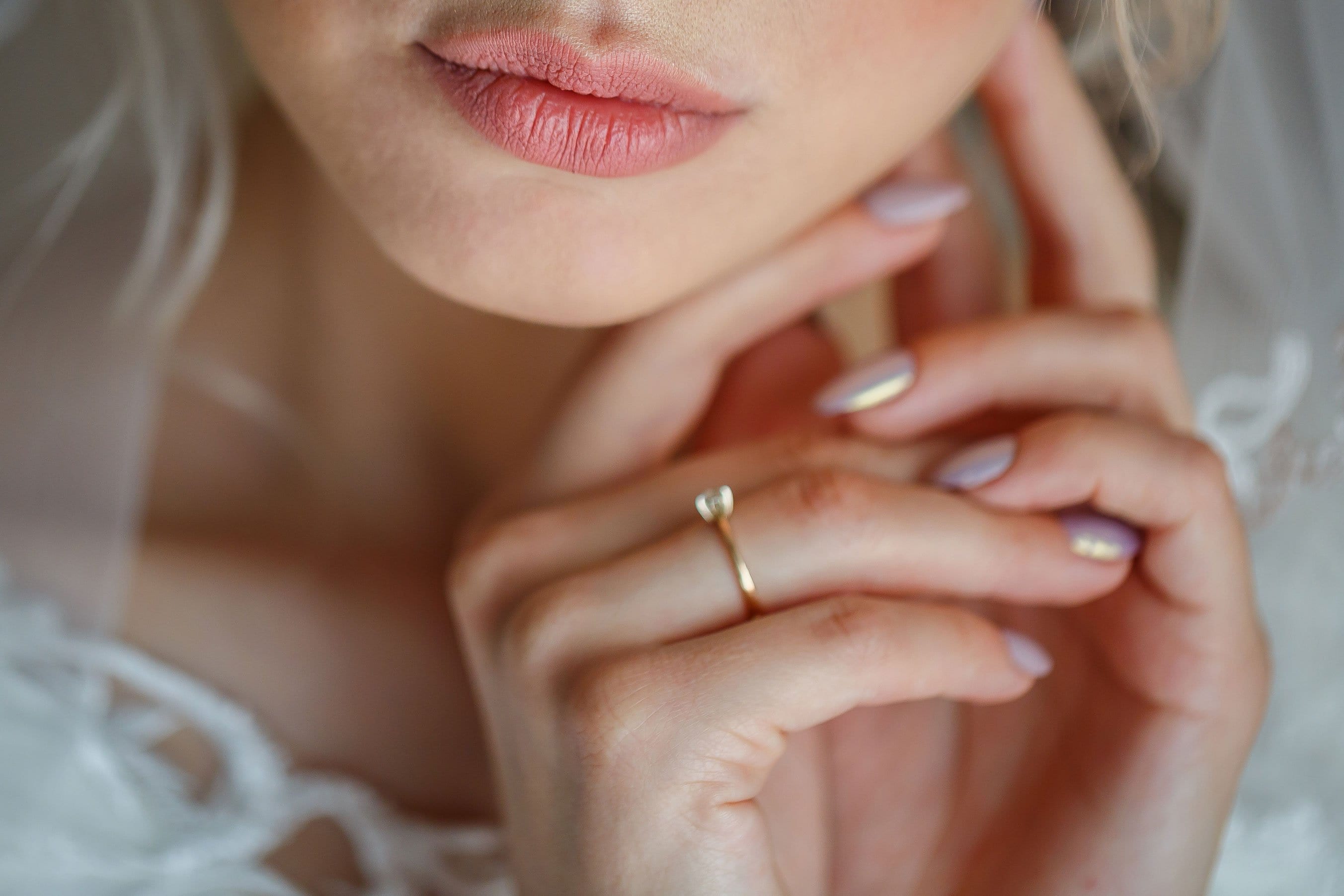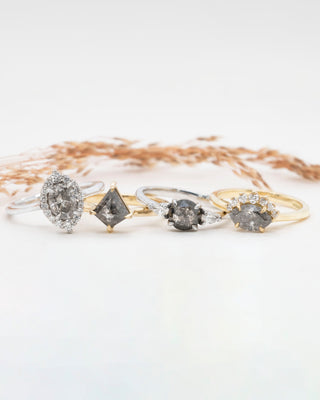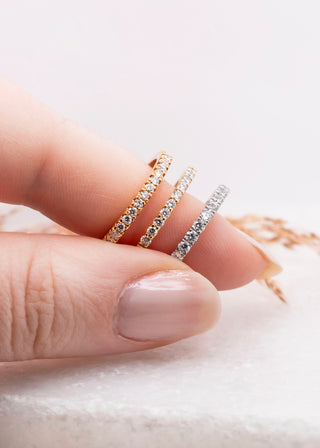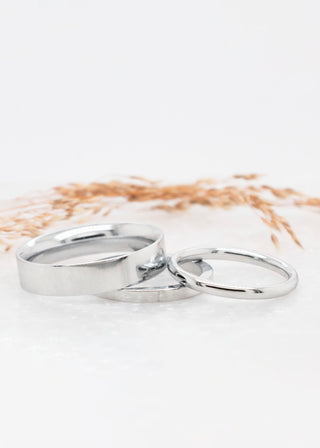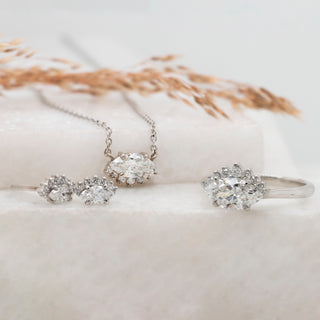DIAMOND EDUCATION
CUT
ROUND BRILLIANT CUT
The most popular diamond shape, there have been many variations over the years but Marcel Tolkowsky defined the perfect cut which had the ideal proportions and facets (57 to be exact) which would give the most brilliance and dispersion. This is the only diamond shape to have its proportion specified and graded. The round brilliant sets the standard for all brilliant cut shapes.
EMERALD
Of the fancy cuts, emerald is among the most favoured. These step-cut diamonds have fewer facets than the brilliant cut diamonds giving them a more understated elegant look. Their subtle beauty is presented through long lines and larger flashes of light. Historically step cuts were one of the very first cuts, starting out life as the table cut 500 years ago and becoming the shape we know now in the 1920s. Because of their larger facets, emerald cuts have a window-like characteristic which means it is important to pay attention to the quality of the diamond. Lower colour and inclusions are more noticeable, so it is better to choose a diamond with a high colour and clarity.
OVAL
The oval has a similar brilliance to a round diamond, with 56-58 facets these stones have generated popularity in recent years because of their elegance. Created in the 1960’s by a man named Lazare Kaplan, their elliptical shape creates an illusion of lengthening the fingers and hand. They reveal a larger surface area than a round diamond with the same carat weight which gives the appearance of a larger stone.
CUSHION
Also known as the pillow and ‘candlelight’ cut, the cushion is a variant of the round brilliant with softened corners and larger facets. They can range in shape from square to rectangular and its cut has evolved over the years where facets have been added to increase brilliance. This diamond has romantic and antique look and can be seen widely in royal jewellery throughout history.
MARQUISE
It is believed that the cut owes its name to King Louis XV who wanted a diamond cut into the shape of the Marquise of Pompadour’s smile. Another variation of the round cut, the marquise with 56 facets, has an elongated shape with tapering points at each end. This striking cut emphasises carat weight and flatters the finger.
PEAR
This cut is a combination of the oval and marquise cut which resembles a teardrop shape, they have good proportions and refract light well. Usually worn with the point towards the top of the finger the cut creates a lengthening effect. They also allow a range of shapes and styles so the shape can be wider, slimmer or have ideal proportions based on personal choice.
RADIANT
A radiant cut is a more modern cut and is the first rectangular cut to have a brilliant facet pattern on both the crown and the pavilion. With 70 facets they combine the outline of an emerald cut with the brilliance of a round cut which presents a more dazzling look than an emerald cut. They can vary in their degree of rectangularity and square the square radiant cut are a popular choice
PRINCESS
The faceting style on a princess cut is similar to the round but they have more triangular and kite shaped facets so similarly to the radiant they combine the brilliance of a round with an overall square appearance. They can have 49-78 facets but the more facets thy have the more brilliance. The princess cut is quite a new cut, but they are becoming increasingly more popular because of their unique facet style and brilliance
COLOUR

- The diamond color evaluation of most gem-quality diamonds is based on the absence/lack of color.
- The ideal colour is the total absence of all body of colour (colourless) except in fancy colour diamonds.
- A chemically pure and structurally perfect diamond has no hue or tint.
- A very precise scale of colour grading, as defined and developed by the GIA, is universally used today.
- The colour grade begins with the letter D representing the rarest and most desirable colourless diamonds and descends to the letter Z which has a tint of yellow or brown.
- The higher the grade the more rare and higher the value.
- Diamonds are graded by comparing them to master stones under controlled lighting and precise viewing conditions.
CLARITY
- Natural diamonds are the result of carbon exposed to tremendous heat and pressure deep in the earth. This process can result in a variety of internal characteristics called ‘inclusions’ and external characteristics called ‘blemishes.’
- clarity is the degree of flawlessness
- Evaluating diamond clarity involves determining the number, size, relief, nature, and position of these characteristics, as well as how these affect the overall appearance of the stone. While no diamond is perfectly pure, the closer it comes, the higher its value.
-The clarity of gemstones is assessed by examination of imperfections
-almost all diamonds contain minute traces of non-crystalized carbon or non-diamond crystals
- natures fingerprint, every diamond is unique
-most imperfections aren’t visible to the naked eye
- the fewer there are the rarer the diamond will be
-diamonds without and imperfections or blemishes are extremely rare and have a much higher value
-the GIA International Diamond Grading are assigned a clarity grade that ranges from FL (flawless) to I (inclusions visible to the naked eye)
CARAT
FLUORESCENCE
-it’s a phenomenon which causes some 35% of gem-quality diamonds to glow under ultraviolet light
-the glow only lasts as long as the diamond is exposed to the UV rays
-in most of the diamonds that display fluorescence the color is blue however in some rare cases it can appear green, yellow, orange or a combination
-it is caused by the presence of nitrogen or other impurities in the crystal structure but does not affect the durability of the diamond
-it varies in strength from none, faint, medium, strong, very strong, graded by the GIA
-10% of those graded show strengths of fluorescence that may impact appearance (i.e., strengths noted on laboratory reports as medium, strong or very strong).
-some people prefer the appearance of diamonds that have medium to strong fluorescence
-some diamonds with extreme strong blue fluorescence may appear hazy or oily


